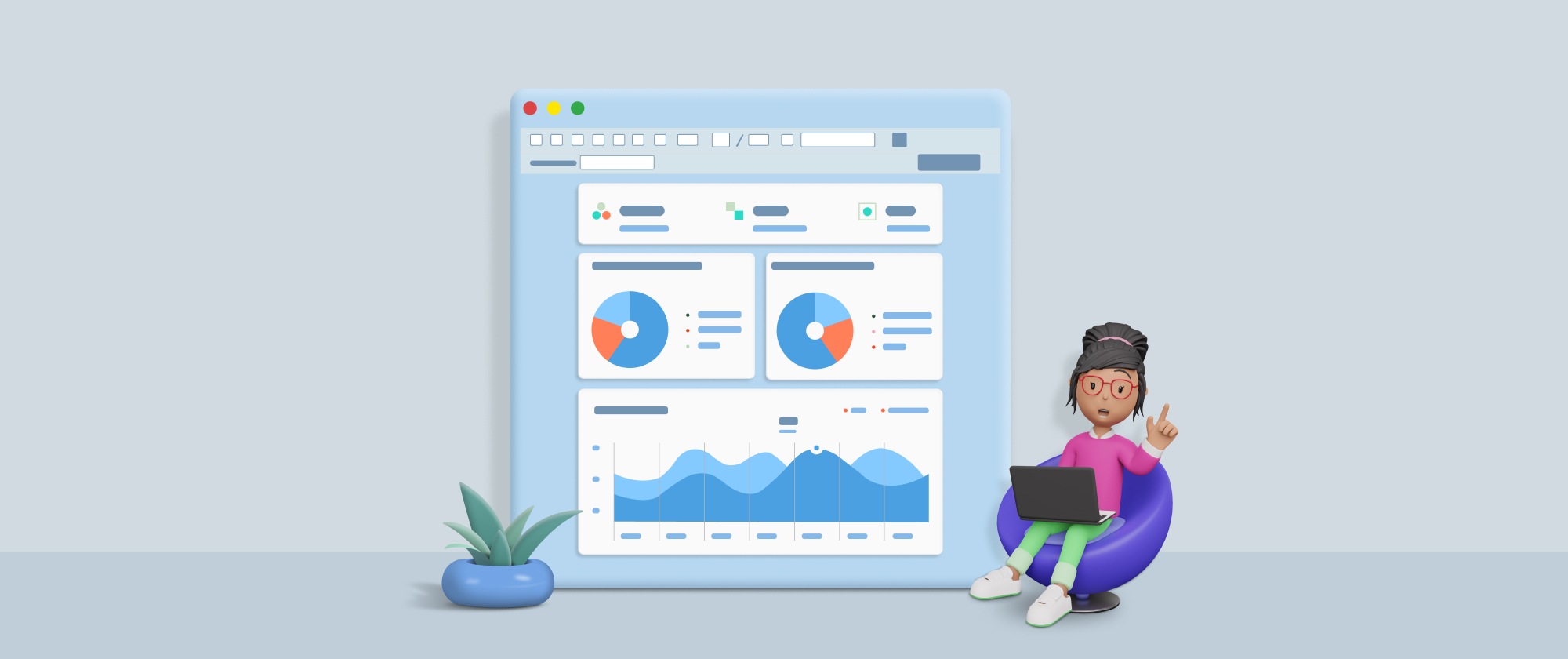Professional Reports Made Easy with Report Designer: A Guide for Styling Reports
 Barbra Weke
Barbra Weke
Creating the perfect report can be a challenge, as we know. The main problem with reports is too many pages filled with nothing but text, making it hard to focus on the crucial information. Poorly designed reports can also be difficult to read and interpret, making them less effective. Therefore, styling is essential to present information clearly when creating professional reports.
Reports use styles to enhance their appearance. Charts, graphs, and tables with customized styles are utilized to illustrate findings and make it easier for readers to understand the information. Additionally, headings, bullet points, and other formatting elements can be incorporated into reports to break up the text and enhance visual appeal.
In this quick guide, I will cover the style basics of alignment, borders, background color, and font available in the Bold Reports Report Designer to create professional reports.
In the following image, you can see the report without styles or colors.

Report Page without Styles or Colors
After reading this blog, you will be able to change these styles to create a good-looking report, like the following, using the Report Designer’s style properties.

Report Page with Styles and Colors
Alignment
Proper alignment is a crucial element of good design, as it helps create a sense of structure and organization in the layout of a report. Consistently aligning elements throughout the report creates a friendly and polished look, making it easier for readers to follow the flow of information. Additionally, aligning numbers and currency symbols to the right side and ensuring appropriate spacing between text and other elements further enhances the overall quality of the report. Overall, incorporating alignment techniques in report design is essential to creating reports that are not only visually appealing but are also easy to read and understand.
You can align text boxes, table cells, and chart labels in reports using the Report Designer. You can find the alignment options in the Properties tab after selecting one of those elements.

Alignment Properties
The following image shows a report with proper alignments within the tablix and text box report items.

Report with Proper Alignments
Borders
One of the most important aspects of report design is the use of borders. Borders can help separate sections of your report and create a sense of structure. With the Bold Reports Report Designer, you can easily add borders to your report by selecting the Border option. From there, you can choose the style, color, and thickness of your border to match your report’s aesthetic. You can set borders to the report layout, report body, and report items (tables, charts).
You can see the border properties under the Basic Settings.

Border Settings
You can customize the border style, color, and width for all borders in the report using the UI. Also, you can set the report borders dynamically using expressions. The following image shows a border applied to the grid report item.

Report with borders
Next, let’s apply background color to the report.
Background Color
Background colors are another key design element. They can be used to highlight important information while also creating a cohesive look for your report. Bold Report’s Report Designer offers a variety of color options to choose from, allowing you to match your report’s color scheme to your company’s branding.
You can find the Background Color settings under the Basic Settings.

Report Background Color Settings
Apply a background color to the report layout, report body, grids, and text boxes. You can apply background colors using the color palettes or using RGBA color options. Also, you can set the report colors dynamically using expressions. The following image shows a report with background colors applied to it.

Report with Background Colors
Font
Font customization is another important design element that can greatly impact the overall look and feel of your report. With Bold Report’s Report Designer tool, you can easily change the font style, size, and color to match your report’s aesthetic. Expressions can be used to customize fonts, too. Choosing the right font can make your report more readable and engaging.
You can use font customization to emphasize important information in your report. For example, you may choose to make headings or subheadings larger or bolder than the rest of the text to make them stand out. This can help guide the reader’s attention to the most important parts of your report. In the following image, I have set the font style to bold for the headers of the grid and the important text boxes.

Report page with styles and colors
If you want to style the reports with customized functions, you can use the Code module and combine it with expressions. For more details on the Code module, refer to this help document.
Note: You can download the reports before and after the styles were applied from here.
Following are examples of other professional reports in different styles created using the Bold Reports Report Designer.
Conclusion
Thanks for reading! I hope this blog provided a useful guide to presenting information more clearly in professional reports created with the Report Designer. To explore more about Bold Reports, look through our demos, solutions, and documentation.
If you have any questions, please post them in the comments section below. You can also contact us through our contact page, or if you already have an account, you can log in to ask your question.
Bold Reports offers a 15-day free trial without any credit card information required. We welcome you to start a free trial and experience Bold Reports for yourself. Let us know what you think!
Stay tuned to our official Twitter, Facebook, and LinkedIn pages for announcements about upcoming releases.
Subscribe to my newsletter
Read articles from Barbra Weke directly inside your inbox. Subscribe to the newsletter, and don't miss out.
Written by

Barbra Weke
Barbra Weke
Barbra is a content producer at Syncfusion who is committed to producing captivating content for Bold Reports products. She works closely with subject matter experts to craft instructional material and collaborates with graphics designers to create engaging content that resonates with the audience.
